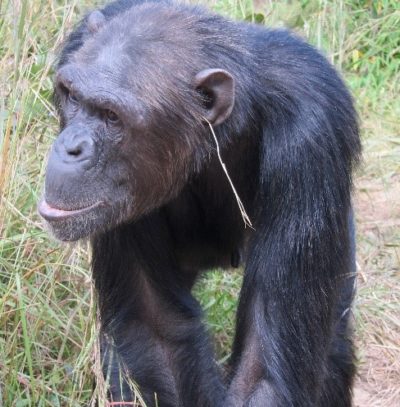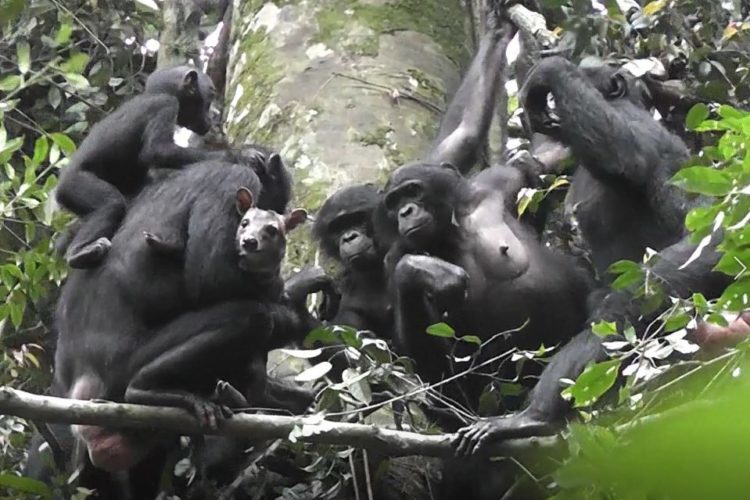The cultural lives of animals revealed
 The idea that only humans have culture and that this neatly separates us from animals is challenged by an extensive review of decades of research into animal culture by a leading expert in animal behaviour at the University of St Andrews.
The idea that only humans have culture and that this neatly separates us from animals is challenged by an extensive review of decades of research into animal culture by a leading expert in animal behaviour at the University of St Andrews.
Professor Andrew Whiten, Emeritus Wardlaw Professor of Evolutionary and Developmental Psychology in the School of Psychology and Neuroscience at the University of St Andrews, argues the case in a wide-ranging review published in the journal Science surveying all that has been discovered in recent decades about how animals create their own cultures.
Professor Whiten said: “The all-pervading cultural nature of our species was long thought to define what it is to be human, separating us from the rest of the natural world and the evolutionary processes that shape it.
“Other species were thought to live by instinct and some ability to learn, but only humans had culture. Over recent decades, a rapidly growing body of research has increasingly revealed a very different picture.”
Professor Whiten argues that if culture is seen as an array of traditions passed on by learning from others, culture is far from unique to humans. To the contrary, evidence of culture now spans a growing variety of mammals, birds, fish and insects.
Animal culture covers almost every type of behaviour, from tool-use to migration and courtship styles. Examples of such animal culture range from chimpanzees in one group being found to develop a cultural tradition of fashionably wearing a grass blade in one ear, to even tiny fruit flies showing ‘mate-choice copying’, in which females who see other females preferring certain kinds of male to mate with later show the same preference, a tradition persisting across generations.

Professor Whiten added: “Culture even pervades animals’ lifetimes, from infancy to adulthood. The young of many species may first learn much from their parents, but increasingly learn from the different skills of others (as we humans do), even coming to focus on those in their group who display the greatest expertise, for example in using tools.
“Learning from others continues to be important into adulthood. Monkeys and apes dispersing as adults into new groups, avoiding inbreeding, have been found to adopt local habits different to those back home – ‘when in Rome, do as the Romans do’ appears a useful rule of what can be learned from the locals in an environment new to these animal immigrants.”
Professor Whiten’s review argues that the scope of all these discoveries into animal culture has enormously wide-ranging and profound implications, ranging from anthropology to evolutionary biology, and most recently the conservation of wild animal populations.
He added: “It must be recognised that culture is not a uniquely human capacity that emerged ‘out of the blue’, but instead has deep evolutionary roots.
“Evolutionary biology needs to expand to recognise the widespread influence of social learning, which provides a ‘second inheritance system’ built on top of the primary genetic inheritance system, creating the potential for a second form of evolution, cultural evolution.”
The implications for conservation of these discoveries in animal culture has been recognised by the United Nations and other conservation bodies, who are now actively incorporating the new understandings into conservation and management.
Beyond traditional efforts to protect species and habitats, there is a new focus on critical animal cultures, with concerted international agreements recently approved for populations such as sperm whales and chimpanzees.
Professor Whiten added: “Recognition of such practical implications of the reach of animal culture, along with implications for the broad range of scientific disciplines, should help assure a bright future for researchers in this field.
“A new generation of scientists will now surely pursue the wider reaches of culture in animals’ lives, aided by the substantial armoury of methodological advances developed over the past two decades.”
A series of 13 talks by Professor Whiten and other research leaders in the field is available online: Animal Cultures: Core Findings and New Horizons.
The paper, ‘The burgeoning reach of animal culture’ by Andrew Whiten is published in Science and available online.
Please ensure that the paper’s DOI [doi.org/10.1126/science.abe6514] is included in all online stories and social media posts and that Science is credited as the source.
Figure 1 (top): In one of four groups of chimpanzees in a wildlife sanctuary in Zambia, one chimpanzee, Julie (shown here), began to insert a grass blade in her ear. Soon others copied this curious and apparently arbitrary fashion, which spread to become a custom followed by a majority (eight out of 12) just in this one group. Photo credit: Edwin van Leeuwen.
Figure 2 (bottom): Neighbouring communities of bonobos in the Democratic Republic of Congo display different preferences for prey animals, even in areas of large overlap between adjacent ranges, excluding ecological explanations for the difference. This group has caught a duiker, the prey on which they specialise. Photo credit: Liran Samuni and Kokolopori Bonobo Research Project.